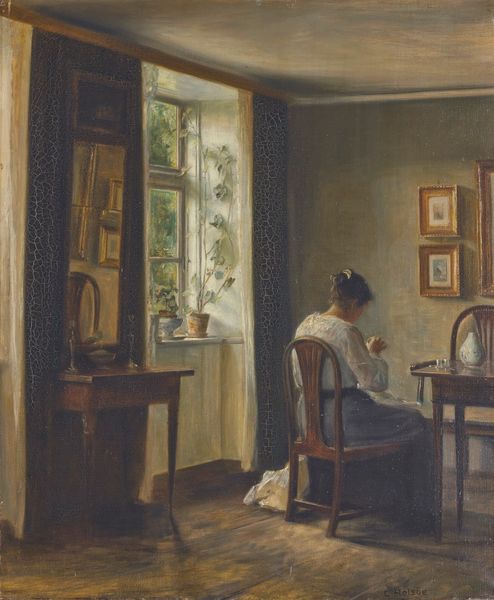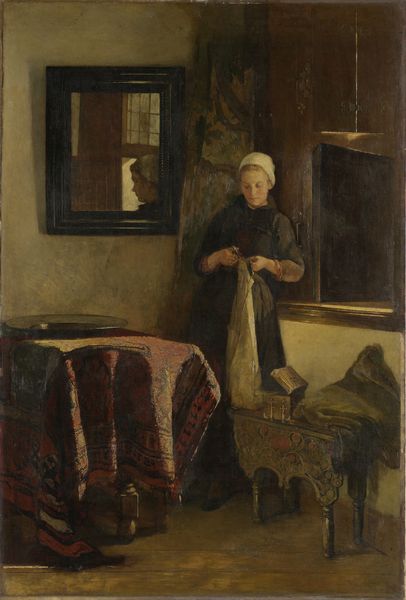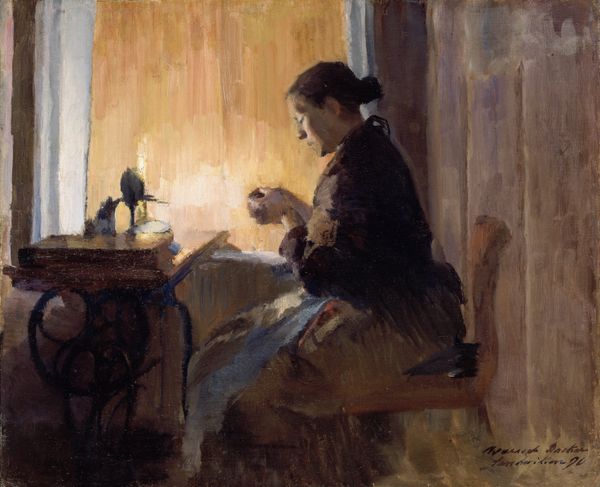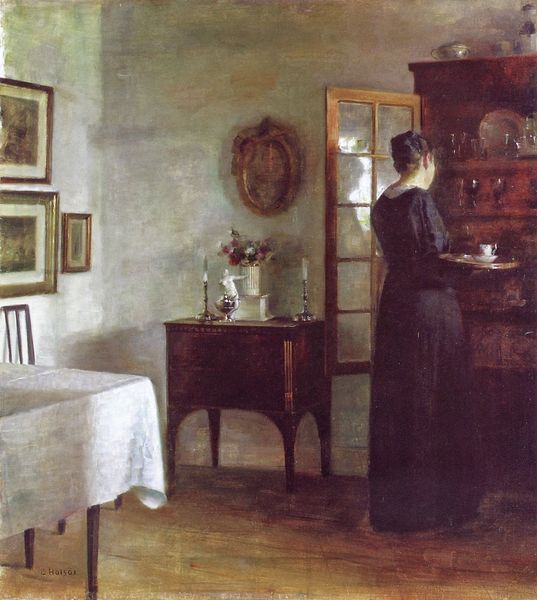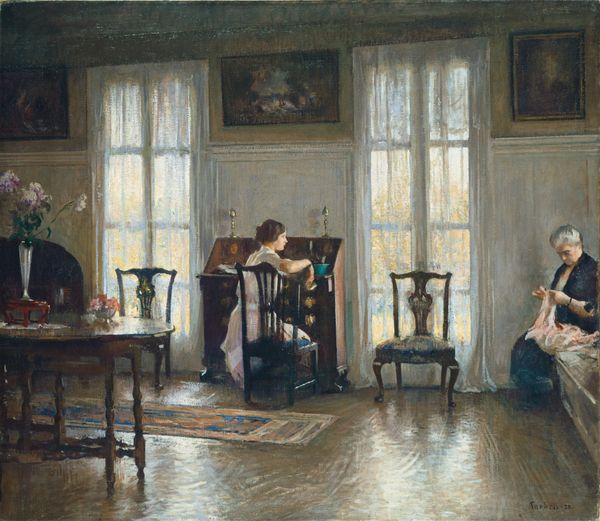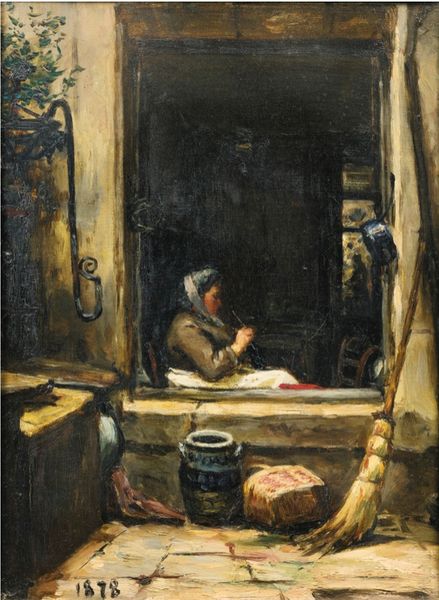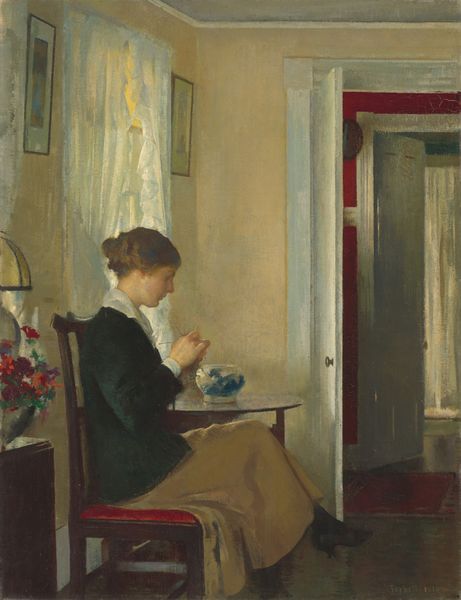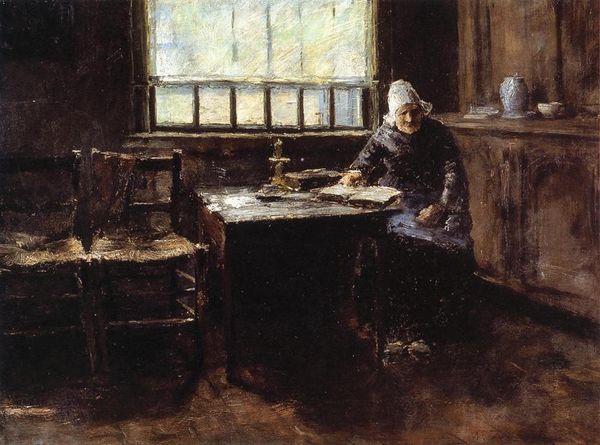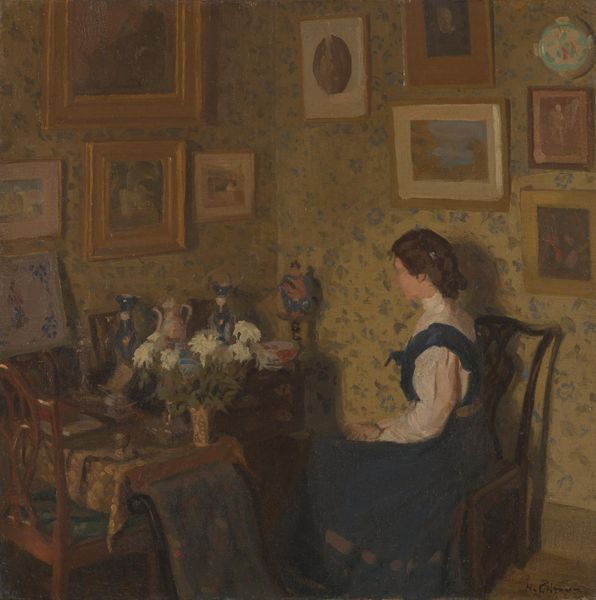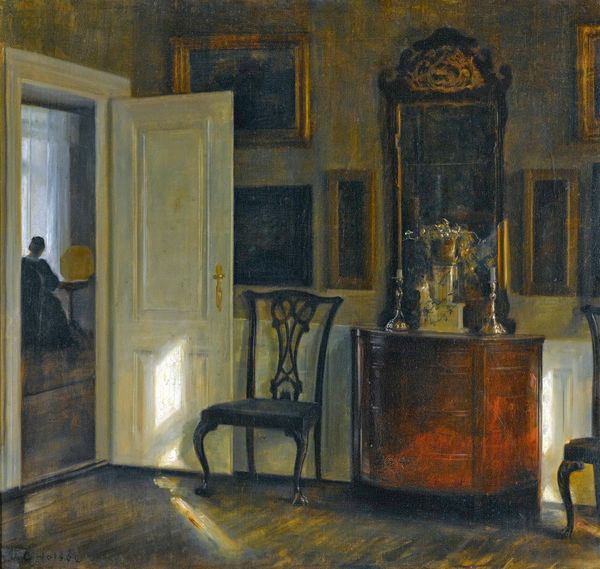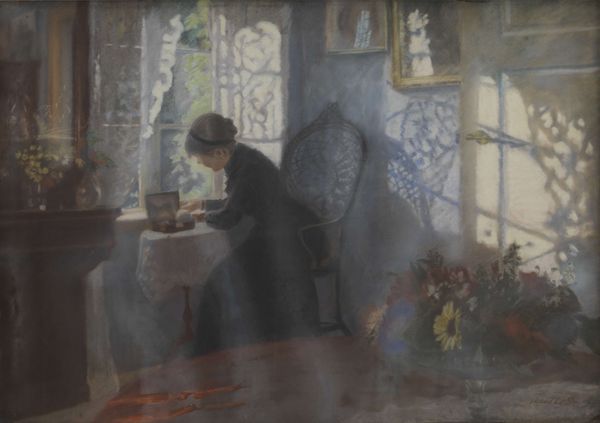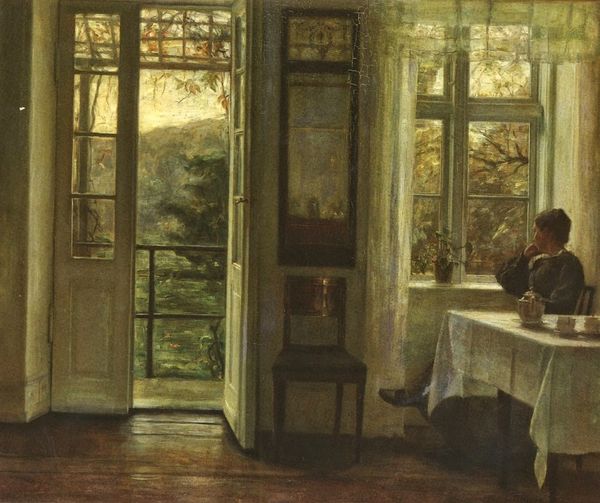
painting, oil-paint
#
portrait
#
painting
#
oil-paint
#
oil painting
#
intimism
#
genre-painting
#
realism
Copyright: Public domain
Editor: So this is Carl Holsøe’s “Woman with a Fruit Bowl,” painted in 1900. It's an oil painting, and the scene is so serene, almost… staged, I think? All the objects placed so deliberately. What do you see when you look at it? Curator: I see a carefully constructed image deeply embedded in the social fabric of its time. Consider the concept of "Intimism." It wasn’t merely about depicting intimate scenes; it was a movement shaped by societal expectations about women and domesticity. Holsøe places this woman squarely within a bourgeois domestic setting, framed by the order and wealth of her surroundings. The objects you mention -- are they markers of status or tools for oppression? Editor: Oppression? That's interesting. It seems so quiet. Curator: Exactly, and whose quiet is that? Reflect on who was choosing what to display in their homes in 1900 and, even more critically, which people are represented. The samovar, for instance: is that included simply as part of her reality? Is there anything else that can inform you of that object's socio-cultural value in that time? Editor: I hadn’t thought about it that way. I was just seeing a pretty picture. So you’re saying that how and where the painting was displayed back then could reflect, or even enforce, specific roles for women and notions of social standing? Curator: Precisely. And by understanding those power dynamics, we gain a more comprehensive view of the painting and the world it reflected. Consider how museums like ours, even today, participate in either upholding or challenging these dynamics. Editor: This gives me a lot to consider – it’s not just what’s on the canvas but also where that canvas exists in the world and who is allowed to see it. Thank you for opening my eyes to that perspective. Curator: My pleasure, this kind of attention to history really opens up how images make claims to meaning.
Comments
No comments
Be the first to comment and join the conversation on the ultimate creative platform.
